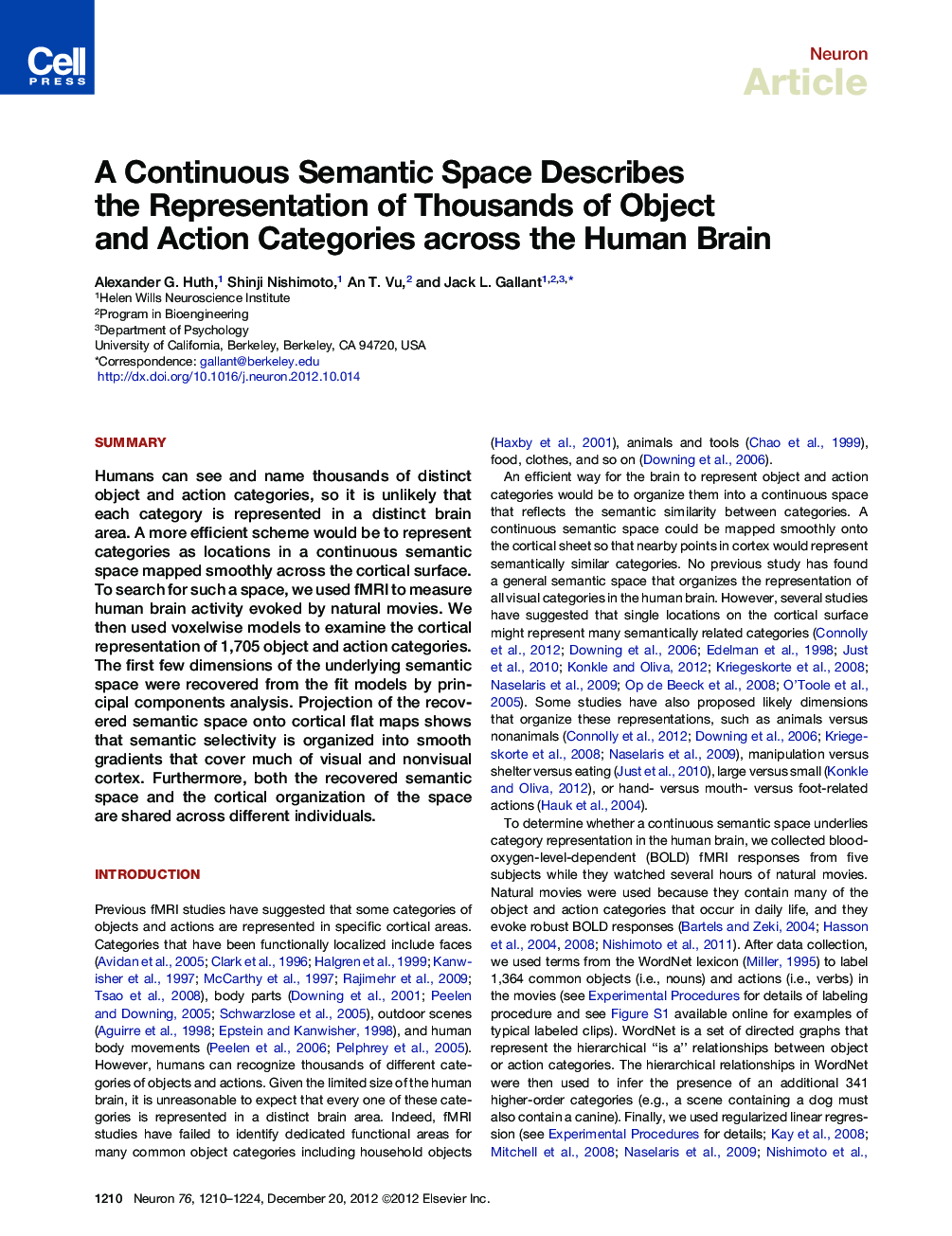| Article ID | Journal | Published Year | Pages | File Type |
|---|---|---|---|---|
| 4321227 | Neuron | 2012 | 15 Pages |
SummaryHumans can see and name thousands of distinct object and action categories, so it is unlikely that each category is represented in a distinct brain area. A more efficient scheme would be to represent categories as locations in a continuous semantic space mapped smoothly across the cortical surface. To search for such a space, we used fMRI to measure human brain activity evoked by natural movies. We then used voxelwise models to examine the cortical representation of 1,705 object and action categories. The first few dimensions of the underlying semantic space were recovered from the fit models by principal components analysis. Projection of the recovered semantic space onto cortical flat maps shows that semantic selectivity is organized into smooth gradients that cover much of visual and nonvisual cortex. Furthermore, both the recovered semantic space and the cortical organization of the space are shared across different individuals.Video Abstract To view the video inline, enable JavaScript on your browser. However, you can download and view the video by clicking on the icon belowHelp with MP4 filesOptionsDownload video (76120 K)
► The brain represents object and action categories within a continuous semantic space ► This semantic space is organized into broad gradients across the cortical surface ► This semantic space is shared across different individuals
